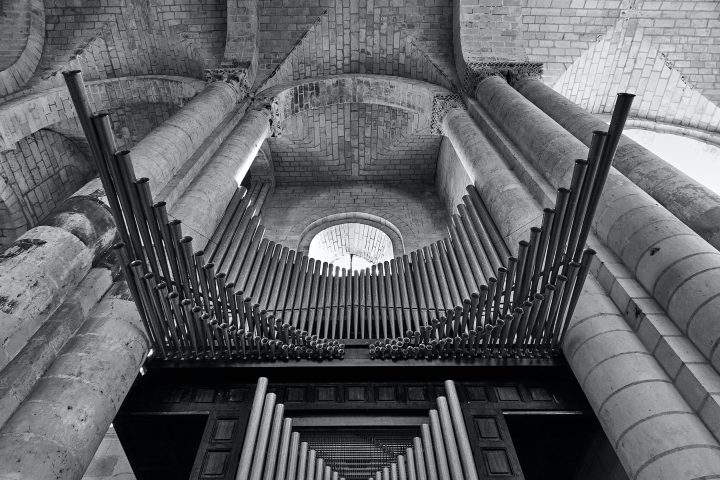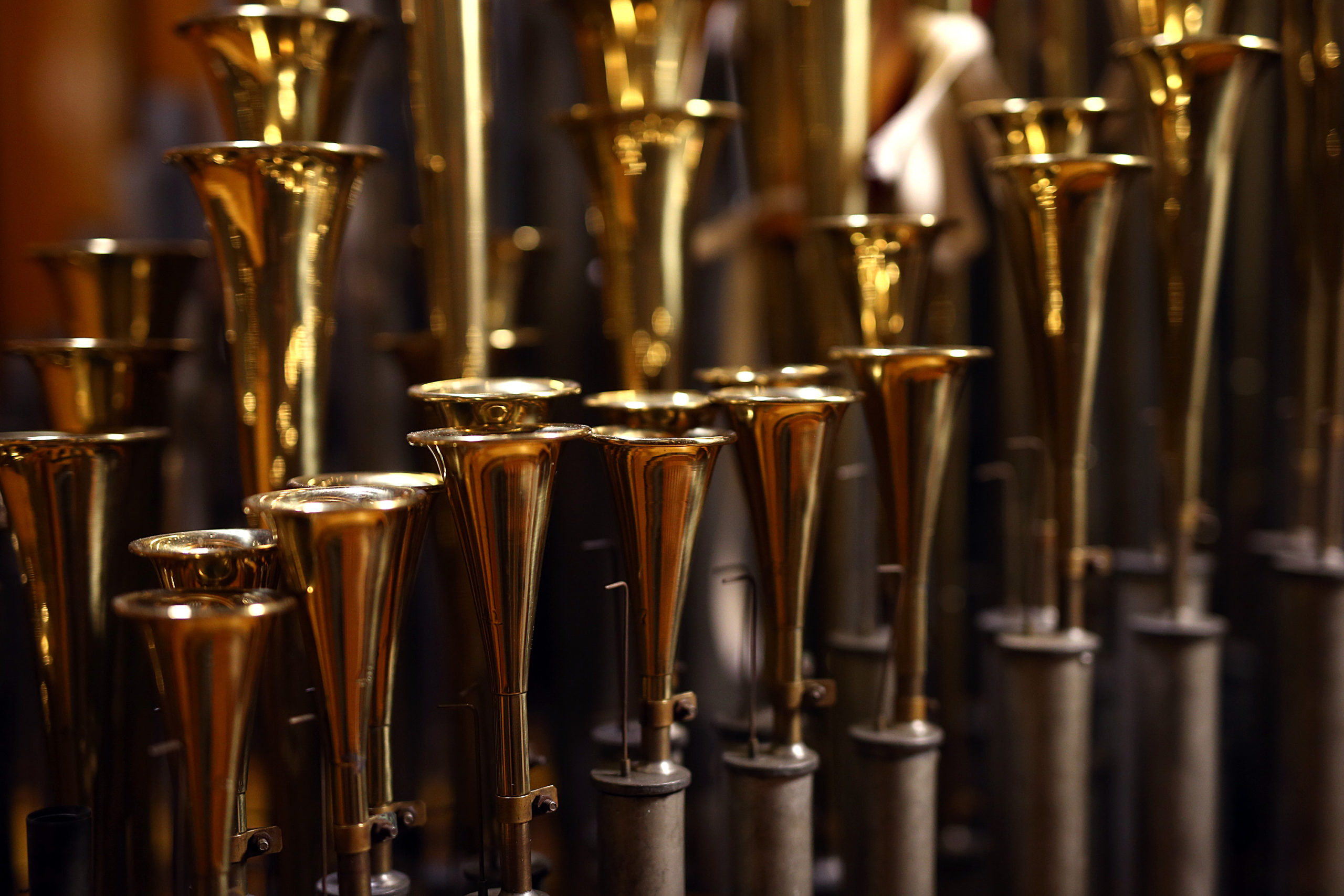MAVERICK LIFE OP-ED
On ‘corona’, dissonance and politics: It’s all in the pipe organ

Donald Trump called the WHO a “pipe organ for China”. Why would he pick such an instrument?
The unprecedented Covid-19 pandemic has affected our lives in unimaginable ways, including how we relate to several daily facets of our existence. The virus has even informed how we utilise metaphors to bring across a particular sentiment or message, directly or insidiously.
However, conflating the pandemic as a foundation and a musical instrument such as the pipe organ to advance a political ideology against perceived adversaries (real or imagined), has certainly never been proffered in history, according to my knowledge. That was until US president Donald Trump launched an investigation into the alleged role of the World Health Organisation (WHO) in spreading the virus and its apparent close ties with China. During Trump’s soliloquy in April 2020, he accused the WHO of being “literally a pipe organ for China”, suggesting the organisation has “misled us”, followed by his usual disclaimer: “I don’t know.”
It is not readily clear why he used the pipe organ as a negative symbol to illustrate his point, other than to (wrongly) project it as a naturally loud and intrusive instrument used to impart some ambiguous modus operandi in a dubious context.
With this virus-fuelled geopolitical diatribe as the backdrop and the ubiquitous term “corona” in the universal vocabulary, it is perhaps an opportune time to refocus and place a somewhat positive spin on the nomenclature of this novel virus.
According to the Merriam-Webster dictionary, one of the meanings of the word “corona” is “something suggesting a crown”. What many people are not aware of is that, in the specifications of some pipe organs, a stop called Corona is not uncommon – which denotes a link between the idea of a “crowning” to the sonic capabilities of the pipe organ.
The pipe organ produces sound by pushing air under pressure through pipes that correspond to a particular keyboard called a manual. The pipes are placed on a windchest in specific formations called ranks, each containing a uniform sound character. Pipe organs have a variety of pipe ranks of a different tone, pitch and volume that can be used individually or in combination. These ranks are controlled by a mechanism known as a “stop”, which is used to allow or prevent controlled pressurised air flowing through the pipes.

Pipes from a pipe organ (Image by Denny Muller for Unsplash)

Pipes shimmer in a pipe room as Europe’s largest Wurlitzer theatre pipe organ as it is unveiled, after six years of restoration, at the Troxy entertainment venue on July 29, 2015 in London, England. Four rooms house the 1728 pipes, ranging from 16 feet to one inch that sit behind the striking art deco facade of the organ and next month will see its first public performance in 40 years when it is played by internationally renowned organist Richard Hills. (Photo by Carl Court/Getty Images)

Red, white and yellow switches are labeled on Europe’s largest Wurlitzer theatre pipe organ as it is unveiled, after six years of restoration, at the Troxy entertainment venue on July 29, 2015 in London, England. Four rooms house the 1728 pipes, ranging from 16 feet to one inch that sit behind the striking art deco facade of the organ and next month will see its first public performance in 40 years when it is played by internationally renowned organist Richard Hills. (Photo by Carl Court/Getty Images)
Registration in organ music is the learned art of combining stops (or registers), in order to produce the desired timbre. A peculiar sound combination unique to the organ is the foundational combination of the so-called principal family of stops, with the lowest pipes ranging from 32 feet to 1 foot in length. To supply more brilliance of tone to this carefully chosen sound palette, the organist would usually add a compound stop called a mixture.
These types of stops (or registers), consist of multiple ranks of pipes, each sounding at the intervals of octaves and fifths above the unison pitch. A stop knob usually denotes the name of the specific pipe rank – for example, the oboe, trumpet, flute, etc, as well as the length of the lowest pipe measured in feet, such as Principal 8’, Octave 4’, Piccolo 2’, etc. The number of pipe ranks in a mixture is denoted by a Roman numeral on the actual stop knob. Therefore, a stop with the inscription “Mixture V” would contain a rank of five pipes per note; for every key played, five different pipes sound, all of which are controlled by the same stop.
The organ register Corona is a mixture stop and usually contains three pipes per note as explained above. The stop knob would therefore feature the label “Corona III”. When this type of register is added to the foundation stops, the multiple pipes per note pressed create a “crowning” of the combination for clarity of sound.

Organ builder John Oliver inspects a pipe at the Royal Festival Hall organ at Southbank Centre on August 30, 2013 in London, England. Recently unveiled following its restoration and re-installation by organ builders Harrison & Harrison at a cost of £2.3 million raised through donations from 60,000 people and a grant from the Heritage Lottery Fund. The instrument, comprising 7,866 pipes, will now be voiced and balanced ahead of its re-inauguration at the Pull Out All The Stops organ festival, running from March 18, 2014 to June 7, 2014. The festival also marks the organs 60th anniversary since it was first played in May 1954. (Photo by Peter Macdiarmid/Getty Images)

A member of staff wipes off Europe’s largest Wurlitzer theatre pipe organ as it is unveiled, after six years of restoration, at the Troxy entertainment venue on July 29, 2015 in London, England. Four rooms house the 1728 pipes, ranging from 16 feet to one inch that sit behind the striking art deco facade of the organ and next month will see its first public performance in 40 years when it is played by internationally renowned organist Richard Hills. (Photo by Carl Court/Getty Images)
One of the internationally revered pipe organs that boasts a Corona III stop is the impressive gallery organ in Ulm Minster in southern Germany, the world’s largest Lutheran church as well as the world’s tallest church tower. The instrument, built in 1969 by the organ-building firm EF Walcker, has five manuals (keyboards), a pedal division (played by the feet) and a total of 95 stops. The Corona III stop of this organ is located on the Oberwerk (“Upper Work”) manual, which is the fourth keyboard from the lowest one. The Oberwerk appropriately houses the pipework that is located in the highest division in the organ case “crowned” by the Corona III rank.
Having a stop called Corona as part of its lexicon surely crowns and solidifies the concept of the pipe organ as “the king of instruments”, as espoused by Wolfgang Amadeus Mozart. In addition, having a Corona stop on an organ will undeniably lead more to the spreading of beautiful messages through music sans the virus – as long as the organist wears a mask with the obligatory sanitiser at hand to pull out all the stops with an added Corona.
Hopefully, Trump will in future utilise an alternative musical instrument other than the organ as a metaphor to describe a particularly nasty view of the relationship between the WHO and China. DM/ML
Professor Theo van Wyk is Associate Professor of Music at the University of Pretoria.

















 Become an Insider
Become an Insider
Comments - Please login in order to comment.